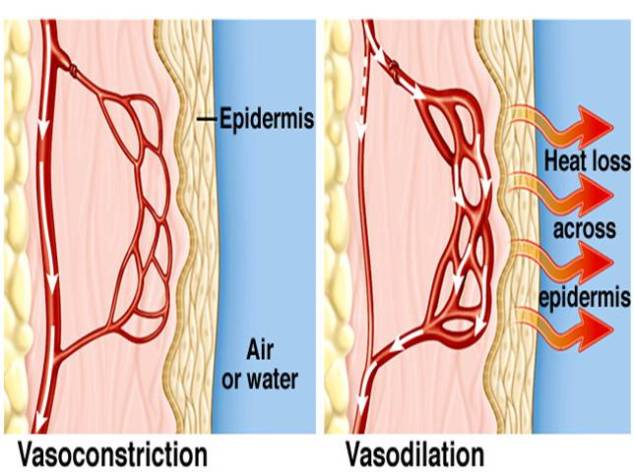Body Regulation
Homeostasis
Homeostasis is the regulation of the internal conditions of a cell or organism to maintain optimum conditions for function in response to internal and external changes. Homeostasis maintains optimal conditions for enzyme action and all cell functions.
In the human body, these include control of:
- Blood glucose concentration
- Body temperature
- Water levels
These automatic control systems may involve nervous responses or chemical responses. All control systems include:
- Cells called receptors, which detect stimuli (changes in the environment)
- Coordination centres (such as the brain, spinal cord and pancreas) that receive and process information from receptors
- Effectors, muscles or glands, which bring about responses which restore optimum levels
Control of Body Temperature
Homeostasis is the maintenance of a constant internal environment. Our body has automatic control systems in place which enable our body to maintain its temperature and water at optimum levels. Cells require these optimum levels in order for them to function properly. If someone does strenuous exercise or is placed in an extreme climate, it will affect homeostasis. The body temperature, blood oxygen levels, hydration and salt levels will all be affected. This may then lead to the individual not feeling as well as their body is trying to cope with the change.
Thermoregulation
Thermoregulation is when the body can maintain its core body temperature at a set value. The body temperature has a massive effect on the enzyme activity as enzymes work best at specific optimum temperatures, depending on the type of enzyme. The outer layer of skin is made of dead cells called epidermis, and it contains sensory nerve endings. Under the epidermis is the dermis, and it contains living cells, blood vessels, sweat glands, hair follicles and sensory receptors. Under the dermis is the subcutaneous tissue that stores lipids. The skin is highly important throughout thermoregulation as it acts as a receptor and an effector.
Hypothalamus is an area of the brain that contains two sets of thermoreceptors, and it receives information about temperature of blood that passes through the brain. This tells the brain about the core body temperature, and it is used to regulate the body temperature. The skin is also the layer between the cells and the external environment. It is where heat is lost and gained.
When the body is too cold, less blood flows through the capillary beds which are near the surface of the skin. This allows more blood to remain in the deeper skin structure, as the arterioles that send blood to the capillary beds become more narrow. Vasoconstriction is when the arterioles contract.
If the body is getting too cold, the pattern of blood flow switches in the skin so less blood flows in the capillary beds near the surface of the skin and more blood is retained deeper in the skin structure. This is achieved by narrowing the arterioles that supply the capillary beds near the surface (arterioles and arteries have plenty of muscle in their walls that can contract to narrow the lumen of the blood vessel). This narrowing of arterioles is called vasoconstriction.
On the other hand, vasodilation is when the arterioles relax, so that more blood is flown towards the capillary beds near the surface. This allows more heat to be lost to the external environment.
- What does vasodilation mean?
- Your answer should include: Arterioles / Relaxing / More / Blood / Flow
Explanation: The arterioles are relaxing, meaning that there is more blood flow towards the capillary beds nearer to the surface. - What is thermoregulation?
- Your answer should include: Body / Maintain / Core / Temperature / Set / Value
Explanation: Thermoregulation is when the body can maintain its core body temperature at a set value. - What is the hypothalamus needed for?
- Your answer should include: Brain / Core / Body / Temperature / Regulate
Explanation: It tells the brain about the core body temperature, and it is used to regulate the body temperature.

